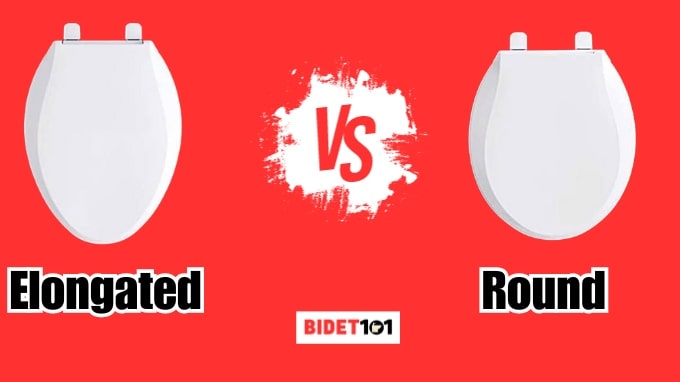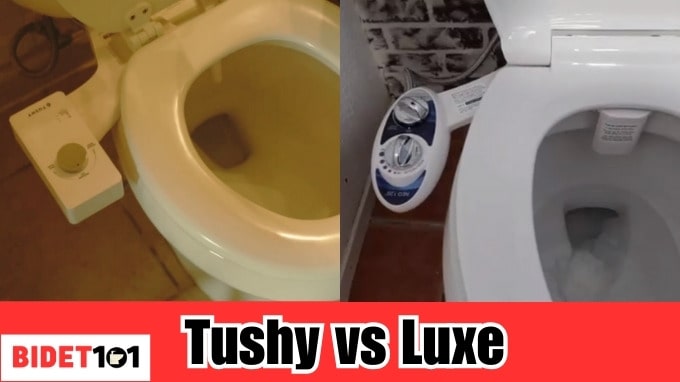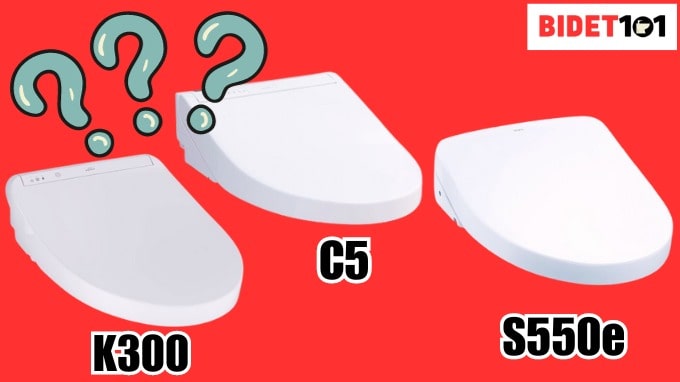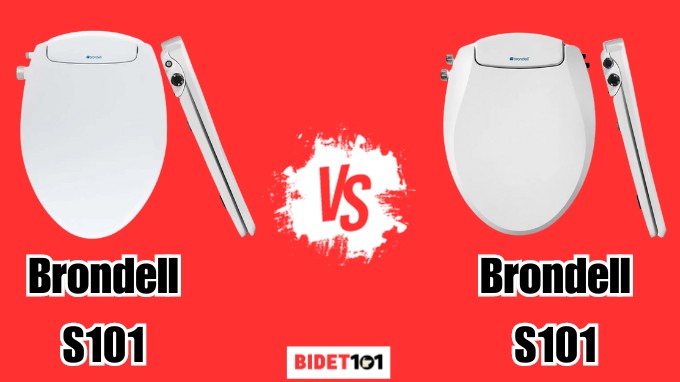In the realm of modern bathroom innovations, bidets have risen to prominence as essential fixtures for enhanced hygiene and comfort. If you’re contemplating the addition of a bidet to your bathroom, you’re about to embark on a journey towards a cleaner and more luxurious experience. However, as you stand at this crossroads, a pivotal choice awaits: integrated bidet toilet or bidet seat?
While the decision may seem straightforward, the nuances of this choice are anything but ordinary. In this article, we delve deep into the realm of integrated bidet toilets and bidet seats to help you navigate this significant decision. By the end, you’ll have the knowledge to make an informed choice tailored to your unique preferences and needs. So, let’s embark on this exploration together, ensuring that your bathroom becomes a haven of comfort and cleanliness.
Consideration Factors to Choose Between Integrated Bidet Toilets and Bidet Seats
When faced with the decision of whether to opt for an integrated bidet toilet or a bidet seat, several essential factors come into play. Understanding these considerations will pave the way for a choice that aligns perfectly with your preferences and requirements.
1. Existing Bathroom Setup:
Begin by assessing your current bathroom layout. If you already have a standard toilet in place, opting for a bidet seat might be the simplest choice. It conveniently attaches to your existing toilet, making installation a breeze. On the other hand, if you’re undertaking a bathroom renovation or starting from scratch, an integrated bidet toilet could be a viable option, provided you’re willing to commit to a more complex installation process.
2. Available Space:
Space within your bathroom is another crucial factor. Bidet seats, while practical, occupy space between the toilet tank and the seat. This setup might slightly reduce your sitting area. In contrast, integrated bidet toilets house their hardware in the tank’s location, preserving your full sitting space. If maximizing your usable space is a priority, an integrated unit might be the way to go.
3. Aesthetics and Bathroom Decor:
If you’re looking to elevate the aesthetics of your bathroom, an integrated bidet toilet offers a sleek and modern appearance. These units seamlessly blend into your bathroom’s decor, providing an elegant touch. Conversely, bidet seats, while functional, may not contribute as much to your bathroom’s overall visual appeal.
4. Installation Expertise:
Consider your DIY skills and comfort level with plumbing tasks. Installing a bidet seat is typically a straightforward process, well-suited for those with minimal plumbing experience. Integrated bidet toilets, however, require a more intricate installation, involving replacing your existing toilet. If you’re not confident in your installation abilities, you might need professional help.
5. Maintenance and Repairs:
When it comes to upkeep, bidet seats have the upper hand. If your bidet seat encounters an issue, you can still use it as a conventional toilet seat while awaiting repairs. Repairs are generally more affordable and manageable. Integrated bidet toilets, in contrast, are more complex machines. Dealing with a malfunction could be trickier and potentially pricier.
In the quest to select between integrated bidet toilets and bidet seats, these considerations serve as valuable compass points. Keep your specific bathroom setup, preferences, and practicality in mind, as they will be your guiding lights towards making an informed choice.
Pros and Cons of Integrated Bidet Toilets and Bidet Seats
To make an informed decision between integrated bidet toilets and bidet seats, it’s essential to weigh their respective advantages and drawbacks. Let’s delve into the pros and cons of each option.
Integrated Bidet Toilets:
Pros:
1. Space Efficiency: Integrated bidet toilets make efficient use of bathroom space, as their hardware is neatly concealed within the toilet tank. This design preserves your sitting area, ensuring maximum comfort.
2. Aesthetic Appeal: These units exude a sleek and modern appearance, elevating the overall decor of your bathroom. If aesthetics are a priority, an integrated bidet toilet is a stylish addition.
3. Complete Functionality: Integrated units offer comprehensive bidet functionality, often including features like heated water, air drying, and adjustable water pressure. They provide a holistic cleansing experience.
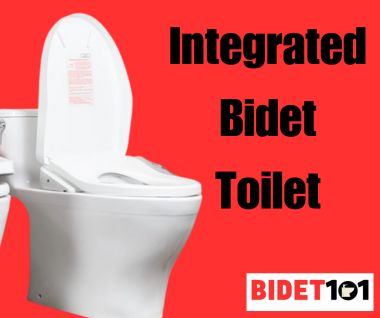
Cons:
1. Complex Installation: Installing an integrated bidet toilet is considerably more intricate than adding a bidet seat. It involves removing your existing toilet and setting up the new unit. This process may require professional assistance.
2. Initial Cost: The upfront cost of purchasing and installing an integrated bidet toilet can be higher compared to a bidet seat. This investment might deter budget-conscious buyers.
3. Maintenance Challenges: In case of malfunctions or repairs, integrated bidet toilets can be more challenging to address. Their intricate design may necessitate specialized attention, potentially incurring higher repair costs.
Bidet Seats:
Pros:
1. Easy Installation: Bidet seats are designed for hassle-free installation. They can be attached to your existing toilet in a matter of minutes, making them an excellent DIY option.
2. Cost-Effective: Bidet seats generally come at a lower price point, making them an affordable choice for most consumers. They offer valuable features without breaking the bank.
3. Maintenance Simplicity: Should your bidet seat require repairs, you can continue using it as a regular toilet seat in the interim. Repairs are often straightforward and budget-friendly.
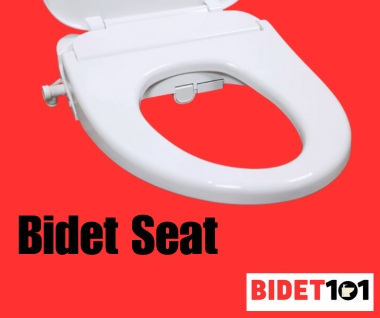
Cons:
1. Space Considerations: While bidet seats are space-efficient, they do occupy some room between the toilet tank and the seat. This may slightly reduce your sitting area compared to an integrated unit.
2. Aesthetic Limitations: Bidet seats, although functional, may not contribute significantly to your bathroom’s aesthetics. They prioritize practicality over design.
3. Limited Features: While bidet seats offer essential bidet functions, they might lack certain advanced features that integrated bidet toilets provide, such as air drying or customizable settings.
By examining these pros and cons, you can better gauge which option aligns with your preferences, budget, and bathroom layout. Ultimately, the choice between an integrated bidet toilet and a bidet seat should cater to your unique needs and priorities.
Which One Should You Buy? Integrated Bidet Toilet or Bidet Seat
Now that we’ve explored the considerations and compared the pros and cons of integrated bidet toilets and bidet seats, it’s time to determine which option suits your needs best. Making this decision hinges on several factors that you should carefully weigh.
1. Bathroom Space: Consider the layout of your bathroom. If you have limited space and value a maximized sitting area, an integrated bidet toilet could be your solution. On the other hand, if space isn’t a concern, a bidet seat can offer excellent functionality without compromising roominess.
2. Budget: Your budget plays a pivotal role. Integrated bidet toilets tend to be more expensive, not only for the unit itself but also for installation. Bidet seats are generally more budget-friendly, making them an attractive choice for those looking to enhance their bathroom without significant financial outlay.
3. Aesthetic Preferences: Think about your bathroom’s aesthetics. If you’re keen on a sleek, modern appearance and willing to invest in a stylish upgrade, an integrated bidet toilet may be the way to go. Conversely, if practicality trumps aesthetics, a bidet seat can provide all the necessary functions without overshadowing your bathroom’s design.
4. DIY or Professional Installation: Your comfort level with installation matters. If you’re a DIY enthusiast and confident in your abilities, a bidet seat’s straightforward installation process may appeal to you. In contrast, integrated bidet toilets often require professional installation, which could be an essential consideration if you’re not handy with tools.
5. Desired Features: Consider the specific features you desire. Integrated bidet toilets typically offer a broader range of functionalities, including heated water, air drying, and customizable settings. If these features are essential to you, an integrated unit might be worth the investment. However, if you prioritize simplicity and cost-effectiveness, a bidet seat can still provide core bidet functions.
6. Maintenance and Repairs: Think about the long-term maintenance and repair aspects. Bidet seats tend to be more user-friendly in terms of maintenance and less costly to repair. Integrated units, while generally reliable, may require specialized attention in case of malfunctions.
In summary, the choice between an integrated bidet toilet and a bidet seat depends on your unique circumstances and priorities. If space, budget, and DIY installation align with your preferences, a bidet seat can be an excellent choice. On the other hand, if you seek a seamless blend of style and functionality and are willing to invest, an integrated bidet toilet might be your ideal bathroom upgrade.
Ultimately, your decision should cater to your individual needs and what you value most in enhancing your bathroom experience.
Maintenance Tips and Costs of Integrated Bidet Toilets and Bidet Seats
Now that you’ve explored the differences between integrated bidet toilets and bidet seats, it’s essential to understand how to keep these fixtures running smoothly over the long haul. Proper maintenance not only ensures their functionality but also extends their lifespan, saving you money in the long run.
Maintenance Tips for Integrated Bidet Toilets:
Regular Cleaning: Integrated bidet toilets require regular cleaning, just like any other bathroom fixture. Use mild, non-abrasive cleaners to wipe down the exterior and interior surfaces. Avoid abrasive scrubbers or harsh chemicals that could damage the finish.
Clean the Nozzle: The cleaning nozzle is a critical component of an integrated bidet toilet. Periodically, clean it with warm, soapy water to prevent buildup. Some models even have self-cleaning nozzles, which can be a significant advantage.
Check for Leaks: Keep an eye out for any signs of water leakage around the base of the toilet. If you notice dampness or puddles, it’s essential to address the issue promptly to prevent further damage.
Inspect the Electrical Components: If your integrated bidet toilet has electronic features, such as a heated seat or air dryer, inspect the electrical connections periodically. Loose wires or damaged components should be repaired promptly.
Maintenance Tips for Bidet Seats:
Regular Cleaning: Bidet seats are relatively easy to clean. Use a mild detergent or a specialized bidet seat cleaner to clean the seat’s surface. Ensure that you clean the control panel and remote (if applicable) as well.
Clean the Nozzle: Bidet seats come with a retractable nozzle. Ensure that it remains clean and free from blockages. Most models have a self-cleaning function that you can activate as needed.
Check the Water Supply: Occasionally, inspect the water supply hose for any signs of leakage or wear. Tighten any loose connections, but be cautious not to overtighten and risk damaging the fittings.
Maintenance Costs:
When considering maintenance costs, bidet seats tend to be more budget-friendly. They have fewer components, and most issues are easily resolved with simple cleaning or minor adjustments. Bidet seat replacement parts are also readily available and cost-effective.
In contrast, integrated bidet toilets, with their additional features and complexity, may have higher maintenance costs. Repairing electronic components or addressing issues with the integrated bidet’s plumbing can be more expensive. However, many manufacturers offer warranties that can help offset repair costs during the warranty period.
It’s worth noting that both integrated bidet toilets and bidet seats are designed to be durable and reliable. With proper care and maintenance, you can enjoy the benefits of a bidet fixture for years to come, making it a valuable investment in your bathroom’s hygiene and comfort.
Environmental Impact of Integrated Bidet Toilets and Bidet Seats
In our modern world, it’s crucial to consider the environmental impact of the choices we make, even when it comes to bathroom fixtures like bidets. Both integrated bidet toilets and bidet seats offer potential eco-friendly advantages compared to traditional toilet-paper-only bathrooms.
Environmental Benefits of Integrated Bidet Toilets:
Reduced Toilet Paper Usage: Integrated bidet toilets often feature a drying function, which means you can use less toilet paper. This reduction in paper consumption can contribute to saving trees and reducing overall paper waste.
Water Efficiency: Many integrated bidet toilets are designed to use water efficiently during the cleansing process. They typically consume less water than a standard toilet and can help conserve this precious resource.
Energy Efficiency: Some integrated bidet toilets incorporate energy-saving features, such as eco-mode or timers that minimize standby power consumption. These innovations can lead to lower energy bills and a reduced carbon footprint.
Environmental Benefits of Bidet Seats:
Reduced Toilet Paper Usage: Bidet seats also encourage reduced toilet paper usage. After using the bidet, a small amount of toilet paper or a reusable cloth can be used for drying, significantly cutting down on paper waste.
Water Efficiency: Like integrated bidet toilets, bidet seats are designed to be water-efficient, using minimal water for effective cleansing.
Energy Efficiency: Many bidet seats have energy-saving modes or automatic shutoff features to conserve electricity. These features are especially beneficial if you have an electric bidet seat.
Consideration of Environmental Impact:
When it comes to environmental impact, both integrated bidet toilets and bidet seats can be eco-friendly choices, helping you reduce your ecological footprint. However, there are some factors to consider:
Water Consumption: While bidet toilets and seats are generally water-efficient, it’s essential to ensure your local water supply can support the increased water usage. In areas with water scarcity issues, you might want to opt for a model with adjustable water pressure settings to minimize water usage.
Energy Efficiency: If you’re concerned about energy usage, look for bidet fixtures with energy-saving features, such as timers or sensors that activate only when in use. These features can help you minimize your energy consumption.
Maintenance: Regular maintenance of your bidet fixture ensures it continues to function efficiently, reducing the need for repairs or replacements. Well-maintained fixtures are more likely to remain eco-friendly over their lifespan.
In conclusion, both integrated bidet toilets and bidet seats offer environmental benefits by reducing toilet paper consumption and using water and energy efficiently. To make an eco-conscious choice, consider your local water availability, opt for energy-efficient features, and commit to proper maintenance practices. By doing so, you can enjoy the convenience of a bidet while minimizing your environmental impact.
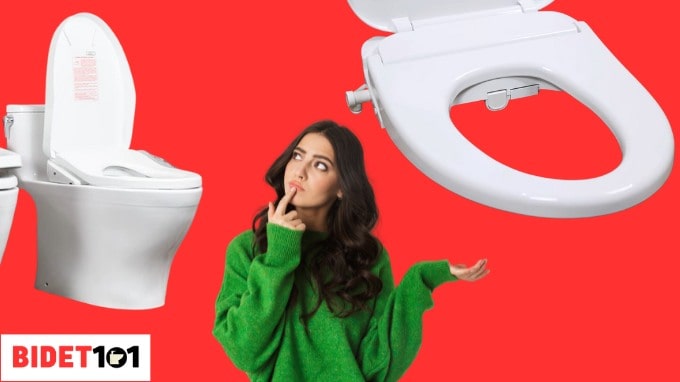
Making Your Decision
Now that we’ve explored the various aspects of integrated bidet toilets and bidet seats, you might be wondering, “Which one should I choose?” Making this decision involves several factors, and it ultimately depends on your specific needs and preferences. Here are some considerations to help you decide:
Budget: Start by determining your budget. Bidet seats are generally more affordable than integrated bidet toilets. If cost is a significant concern, a bidet seat might be the better choice for you.
Space: Examine the available space in your bathroom. Integrated bidet toilets require more room, as they replace your existing toilet entirely. If your bathroom is on the smaller side, a bidet seat is a space-saving alternative.
Installation: Consider your DIY skills and willingness to tackle home improvement projects. Installing a bidet seat is typically straightforward and can be done by many homeowners. In contrast, installing an integrated bidet toilet may require professional assistance due to its complexity.
Features: Think about the features you desire. Integrated bidet toilets often come with advanced functions like air dryers, deodorizers, and heated seats. Bidet seats offer a range of features as well, but the selection may vary depending on the model.
Aesthetics: Evaluate your preference for bathroom aesthetics. Integrated bidet toilets provide a sleek, unified look, while bidet seats are attached to your existing toilet and may have a more conventional appearance.
Environmental Concerns: If you’re environmentally conscious, both options can be eco-friendly. However, check for water and energy efficiency features in the specific models you’re considering.
Personal Comfort: Ultimately, your comfort matters most. Try to test out both options if possible to determine which one feels more comfortable and suits your personal hygiene needs.
Local Availability: Check the availability of integrated bidet toilets and bidet seats in your area. Some regions may have limited options, making your decision easier based on what’s accessible. However, if you find that these fixtures are not readily available in your area, consider exploring online options, such as platforms like Amazon, to broaden your choices.
Read Reviews: Before making a final decision, read product reviews and seek recommendations from others who have installed bidet fixtures in their bathrooms. Real-world experiences can provide valuable insights.
Remember that there is no one-size-fits-all answer to the integrated bidet toilet vs. bidet seat dilemma. Your choice will depend on your unique circumstances, so take your time to weigh these factors carefully.
If you’re still unsure after considering these factors, don’t hesitate to reach out to experts or professionals in the field. They can offer guidance and help you make an informed decision that suits your needs and preferences.
In conclusion, whether you opt for an integrated bidet toilet or a bidet seat, both choices can enhance your bathroom experience and personal hygiene. It’s all about selecting the option that aligns with your budget, space, and desired features. We hope this guide has provided you with valuable insights to make your decision-making process smoother.

